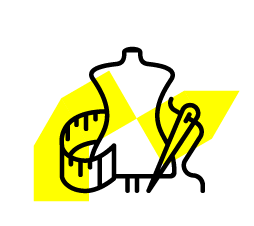
Mode
Definition and description
of the industry
The fashion industry involves the design, production and marketing of clothing, accessories and footwear. It is characterised by its diversity, from haute couture to ready-to-wear, and by its rapid cycle of trend renewal. More and more initiatives are being developed to slow down this cycle, such as the second-hand market and slow fashion. Fashion is a reflection of cultural and social identity, and a sector influenced by celebrities and social phenomena.
Key steps and players
in the value chain
1.
Design and creation
Developing collections and creating unique designs based on trends and seasons.
Actors
Stylists and fashion designers.
2.
Materials sourcing and production
Selection and purchase of raw materials, management of textile production.
Actors
Fabric buyers, product managers.
3.
Manufacture and assembly
Making fashion items, from cutting fabrics to final assembly of garments.
Actors
Garment factories, craftsmen, sewing workshops.
4.
Distribution and logistics
Transporting collections to points of sale and distributors.
Actors
Wholesalers, distributors, logisticians.
5.
Marketing and communications
Marketing of collections, advertising campaigns and fashion shows.
Actors
Marketing directors, photographers, models.
6.
Sales and marketing
Showcasing and selling collections to end consumers.
Actors
Shops, vendors, e-commerce.
7.
After-sales, loyalty and second-hand services
Management of returns and exchanges, development of customer relations and value enhancement.
Actors
Customer services, repair centres, second–hand market.
